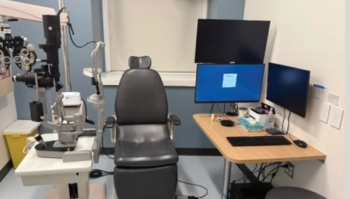
Switching from preserved to preservative-free prostaglandin
Investigating the tolerability and IOP reduction effect of switching from latanoprost to tafluprost in patients exhibiting ocular surface side effects
While preservatives are important components of ophthalmic solutions, they are certainly the epitome of a 'double-edged sword'. Benzalkonium chloride (BAC) is the most widely employed preservative in ophthalmic preparations, including prostaglandin analogues, first-line drugs used in the management of glaucoma, as well as other IOP-lowering drugs, artificial tears and antibiotics.
BAC is a quaternary ammonium compound that has detergent-like and cationic surface surfactant properties that alter cell membrane permeability of microorganisms resulting in lysis of cytoplasmic contents.1
Among the various IOP-lowering medications, prostaglandin analogues are the most commonly used in practice and contain BAK concentrations that should be considered by the eyecare practitioner. Among these analogues, latanoprost (Xalatan; Pfizer) contains 0.02% BAC, the highest concentration among the prostaglandin analogues. Studies indicate there are BAC dose-dependent conjunctival and corneal epithelium toxicities that clinicians will need to take into consideration when using this agent in their glaucoma patients, especially in those who have OSD. For example, Guenoun et al. observed that latanoprost produces a significant decrease in conjunctival epithelial cell membrane integrity and a significant increase in apoptosis when compared with another prostaglandin analogue containing only 0.005% BAK.2 However, latanoprost is accepted as an effective and well-tolerated IOP-reducing agent that is extensively used for glaucoma.
Hannu Uusitalo of the University of Tampere and Tampere University Hospital in Finland, together with colleagues across Europe recently published a study in Acta Ophthalmologica 20103 looking at whether patients who had ocular surface disorders during their treatment with latanoprost benefited by changing to preservative-free tafluprost.
Scope of the study
One hundred and fifty eight patients suffering from primary open-angle glaucoma (POAG) were enrolled in this multi-centred open-label study, which took place in Finland, Sweden and Germany. Participants were required to have been using latanoprost for 6 months or longer and a minimum of two ocular symptoms or one symptom and one sign of ocular surface irritation and/or inflammation.
Patients were switched from latanoprost to preservative-free tafluprost, at baseline for a period of 12 weeks. Five visits were scheduled and IOP was measured at each one. The ocular symptoms and signs were observed using tear break-up time, Schirmer's test, fluorescein staining and evaluation of conjunctival hyperaemia and blepharitis. The conjunctival impression cytology specimens were evaluated by an independent assessor. A quality of life and drop discomfort questionnaire was used based on the Comparison of Ophthalmic Medications for Tolerability (COMTol).
Results
Intraocular pressure was maintained at the same level following the preservative-free tafluprost treatment (16.4 ± 2.7 mmHg) as latanoprost at baseline (16.8 ± 2.5 mmHg). The number of patients who experienced forms of irritation, burning or stinging decreased during the treatment. The number of patients with abnormal fluorescein staining of cornea was reduced from 81.6% to 40.6%, those with conjunctiva from 84.2% to 43.2%, blepharitis from 60.1% to 40.6%, conjunctival hyperaemia 84.2% to 60% and abnormal Schirmer's test from 71.5% to 59.4%. Tear break-up timme went up from 4.5 ± 2.5 seconds to 7.8 ± 4.9 seconds. The number of patients with abnormal conjunctival cells based on HLA-DR and MUC5AC also reduced.
Newsletter
Get the essential updates shaping the future of pharma manufacturing and compliance—subscribe today to Pharmaceutical Technology and never miss a breakthrough.







































